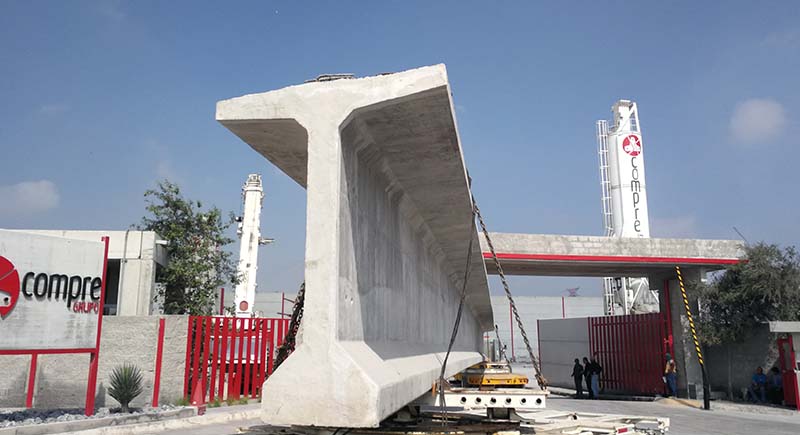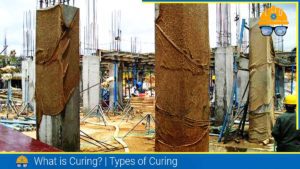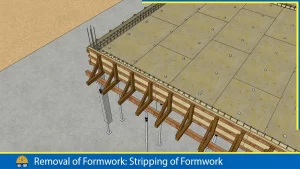Introduction:
Prestressed concrete is a type of reinforced concrete that is widely used in modern construction due to its superior strength and durability. It is a versatile material that has been used in a variety of applications such as bridges, high-rise buildings, and parking garages. In this article, we will explore the advantages of prestressed concrete and its various applications.
What is Prestressed Concrete?
Doehring of Germany and Jackson of the United States developed the initial principles of prestressed concrete in the 1880s. Freyssinet of France is credited with the modern development of prestressed concrete. He demonstrated in the late 1920s that by utilizing high-tensile steel, the losses in prestress due to concrete creep and shrinkage could be minimized.
Prestressed concrete is a type of concrete that has been compressed by applying internal forces to the concrete before it is subjected to external loads. The internal forces are applied through the use of high-strength steel tendons or cables that are tensioned before the concrete is poured. This compression makes the concrete stronger and more resistant to tension, which is the primary mode of failure in traditional reinforced concrete structures.
There are two types of prestressed concrete members: pretensioned and posttensioned. To produce pretensioned concrete members, steel tendons are stretched between external buttresses before the concrete is poured. Once the concrete reaches the required strength, the tendons are released from the buttresses and the prestressing force is transferred to the concrete member through the bond between the tendons and the concrete. In the case of posttensioned concrete members, steel tendons are stretched within ducts in the hardened concrete member by applying force against the member itself and then anchored at the ends of the member.

The concrete grade for Prestressed Concrete
The concrete grade used for prestressed concrete depends on the application and design requirements. Generally, high-strength concrete with a minimum compressive strength of 50 MPa (7,250 psi) at 28 days is required to withstand the high compressive forces created during prestressing and provide durability and long-term performance. The specific grade is determined by design loads, span lengths, member sizes, and environmental conditions, and specified by the design engineer based on applicable building codes, regulations, and standards. Quality standards for mix design, placement, curing, and testing are also important to ensure long-term durability and performance.
Applications of Prestressed Concrete:
Bridges: It is commonly used in the construction of bridges due to their high strength and ability to withstand heavy loads.
High-Rise Buildings: The strength and durability of prestressed concrete make it an ideal material for the construction of high-rise buildings.
Parking Structures: Such is often used in the construction of parking garages due to its ability to span large distances and resist the effects of heavy traffic and vibration.
Industrial Facilities: It is used in industrial facilities such as warehouses, factories, and distribution centres as it can withstand heavy loads and high traffic.
Advantages of Prestressed Concrete:
- Durability: The high-strength steel tendons used in prestressed concrete are corrosion-resistant, which ensures that the concrete remains durable and long-lasting.
- Reduced Cracking: Due to its higher strength and ability to resist tension, there is minimal or no crack developed.
- Cost-Effective: Despite its superior strength and durability, prestressed concrete is cost-effective when compared to other construction materials.
- Increased Strength: Prestressed concrete is stronger than traditional reinforced concrete, which allows for larger spans and higher load-bearing capacities.
Disadvantages Of Prestressed Concrete:
- While prestressed concrete offers many advantages over traditional reinforced concrete, there are also some potential disadvantages to consider:
- High Initial Cost: The process of pre-stressing concrete can be expensive, which can increase the overall cost of a construction project.
- Specialized Equipment: Specialized equipment and expertise, can add to the cost and complexity of a project for developing the components or elements of prestressed concrete.
- Limited Flexibility: Once pre-stressed, the concrete is less flexible than traditional reinforced concrete, making it more difficult to make changes or modifications during construction.
- Maintenance: While it is generally durable and requires less maintenance than traditional reinforced concrete, it can still be vulnerable to corrosion and other forms of damage over time.
- Risk of Failure: If not designed or installed properly, it can be vulnerable to failure, which can be catastrophic in certain situations.
Conclusion:
Prestressed concrete is a versatile material that has many advantages over traditional reinforced concrete. Its strength, durability, and cost-effectiveness make it an ideal material for a wide range of construction applications. As technology and engineering continue to evolve, we can expect to see even more innovative uses of prestressed concrete in the future.
FAQs
Q: What is prestressed concrete?
A: Prestressed concrete is a type of reinforced concrete where the steel reinforcement (tendons) are pre-tensioned or post-tensioned before the concrete is cast. This compresses the concrete, resulting in improved structural performance and durability.
Q: what type of steel is used for prestressed concrete?
A: The type of steel that is typically used for prestressed concrete is high-strength steel, also known as high-tensile steel. This steel has a higher yield strength and tensile strength than traditional steel, which allows it to withstand the high-tension forces that are applied during the prestressing process. The high-strength steel used for prestressing is typically in the form of strands or wires that are tensioned and then anchored to transfer the stress to the concrete. The strands or wires are usually made from low-relaxation steel, which is steel that has been heat-treated to reduce its tendency to relax or lose tension over time. This helps to maintain the prestress in the concrete over the long term, which is important for ensuring the structural integrity and durability of the concrete.
Q: What is the difference between pre-tensioned and post-tensioned concrete?
A: Pre-tensioned concrete is where the steel tendons are tensioned before the concrete is cast. The tendons are anchored at the ends of the concrete member, and as the concrete sets, it is compressed by the tendons. Post-tensioned concrete is where the tendons are tensioned after the concrete is cast. The tendons are placed in ducts within the concrete member and then tensioned, compressing the concrete.
Q: How is prestressed concrete designed?
A: The design of prestressed concrete involves determining the appropriate level of prestressing force required to achieve the desired level of performance. This includes consideration of the loads the structure will be subjected to, as well as factors such as the size and shape of the structure, the properties of the materials used, and the construction process.
![]()







